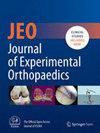Open reduction and internal fixation offers lower hip-related complications compared to stem revision in Vancouver B2 fractures around cemented polished tapered femoral stems
Abstract
Purpose
Periprosthetic femoral fractures (PFFs) after total hip arthroplasty (THA) are increasing, particularly Vancouver B2 fractures around cemented polished tapered femoral stems. Open reduction and internal fixation (ORIF) are more frequently used in comparison to the traditional stem revision to deal with these complex fractures. This observational study aims to compare the outcomes of ORIF versus stem revision in the treatment of Vancouver B2.
Methods
A retrospective cohort study was conducted at Danderyd Hospital, Stockholm, from 2008 to 2022, including 157 patients (mean age 83.4 ± 7.0 years, 59% females) with a surgically treated Vancouver B2 fractures with an intact bone-cement interface. The study assessed the immediate and long-term outcomes of ORIF versus stem revision, examining post-operative complications, reoperation rates, and implant survivorship.
Results
Among the 157 patients, 37 were treated with ORIF and 120 with stem revision. The ORIF group, which consisted of older patients and had a higher prevalence of cognitive dysfunction, experienced no hip-related adverse events. In contrast, the revision group had a 17.8% incidence of adverse events. Mortality within 90 days was significantly higher in the ORIF group (24%) compared to the revision group (4%) (p = 0.0007). One-year mortality was also higher in the ORIF group (32%) than in the revision group (15%) (p = 0.03).
Conclusions
ORIF presents as a viable option for managing Vancouver B2 fractures in the proximity of a polished tapered stem when anatomical reduction is possible. The less invasive surgery provides potential advantages in patient outcomes and resource utilization. Further research is warranted to aid in the development of treatment guidelines.
Level of Evidence
III


 求助内容:
求助内容: 应助结果提醒方式:
应助结果提醒方式:


